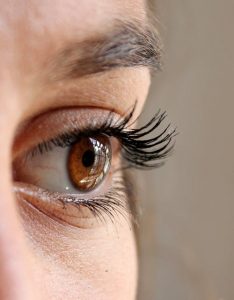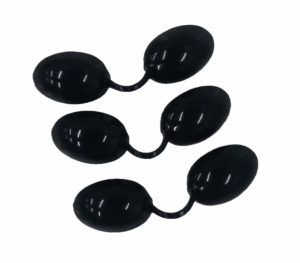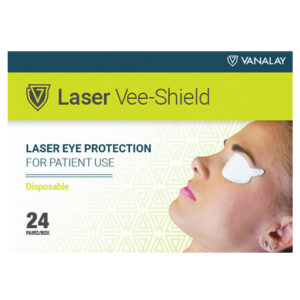
Pointy needles. Razor-sharp tweezers edges. Powerful lasers. Bright lights. Bottles and tubes of mixtures that often contain concentrated chemicals or alcohol.
As skin professionals devoted to helping clients look and feel their best, it can be easy to forget that our treatment rooms and regular routines are filled with items that can also cause real harm. All it takes is one momentary lapse or careless mistake.
For a client reclined in your chair as you perform your work above them, nothing is more vulnerable than their eyes.
An article posted on DentistryIQ.com HERE recounts the story of a young mother named Jenn who visited her dentist for a root canal. While in the chair, Jenn was not provided with eye protection. In a moment’s inattentiveness, the dentist accidentally dropped the needle he had just used to administer a numbing agent in Jenn’s mouth and it fell directly into her eye.
Though the eye did not initially appear badly damaged, unbeknownst to both the dentist and Jenn, the tip of the needle had also picked up streptococcus bacteria from her mouth. By the next morning, a major infection had developed, eventually resulting in Jenn permanently losing vision in her eye. Following a lawsuit, the dentist no doubt suffered huge losses as well—a large sum of money, his reputation and more than likely his practice.

Fortunately, there are some simple precautions every clinician—and skin professional—can take to protect clients and their eyes during treatment. It all starts with providing clients with proper eye protection.
Among the choices available, and if the treatment does not involve laser or IPL, the standard plastic eye shield is an economical option. These reusable shields offer basic protection against sharp edges and bright treatment lights but are not recommended or rated for protection from laser light. As the most basic means of protection, these shields are held in place only by gravity and have a plastic bridge that can inhibit some access to skin beneath. These basic eye shields are sold in packages of three pairs and may prevent a catastrophic situation for less than $1 each.
A second choice for treatments without laser or lights are Super Sunnies. Designed similarly to standard eye shields, Super Sunnies feature eyeholes with dark-colored lenses that permit clients limited visibility through the shields. They also include an elastic band that fits around the head to hold the shields in place. Super Sunnies are sold in individual pairs and, like standard eye shields, are not rated for protection from laser light (although could be used in conjunction with such protection noted below).

When laser or light therapies are involved, the most comprehensive protection is Laser Vee-Shield by Vanalay. Designed to fit most orbital sizes, these disposable aids have a backing coated with light, hypoallergenic adhesive that holds them comfortably in place while allowing easy access to the bridge, brow and temples. The thick pad protects eyes against sharp edges and laser light infiltration of wavelengths between 190 – 11,000nm and forces client eyes to be closed. For additional protection from tool drops, you could pair the use of Laser Aids with one of the harder plastic shields listed above. Laser Aids are sold in boxes of 24 pairs.
Looking for something economical to keep on hand for both client and professional use? Check out these Full Coverage Face Goggles.
Finally, we know that many skin professionals also choose to provide clients with plastic sunglasses or other eyewear for eye protection. If you choose this option, it is important to remember that many states require (and clients will expect) that all reusable treatment items are thoroughly cleaned and disinfected after each use. To clean eyewear, we recommend medical cleaning wipes or PDI lens wipes. The latter option contains alcohol to ensure the removal of sticky residue that certain creams or topicals can leave behind.
Whichever eye protection option you choose, you’ll get the peace of mind of knowing you have taken an important step in protecting your patients—and your business.
Tags: eye protection, eye shields, honeywell, laser aid, super sunnies, eye shield, standard eye shield, client protection